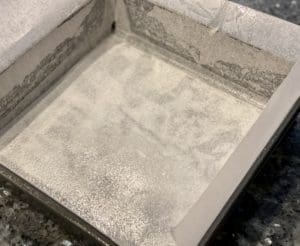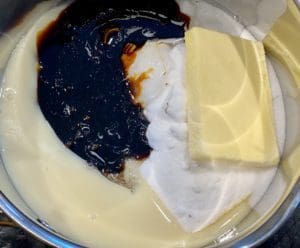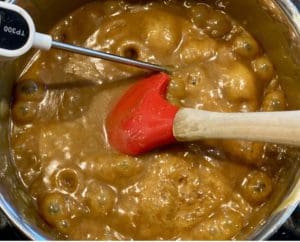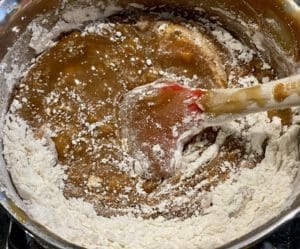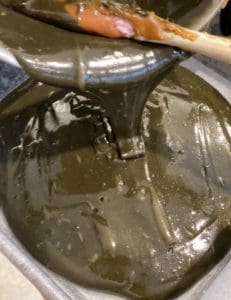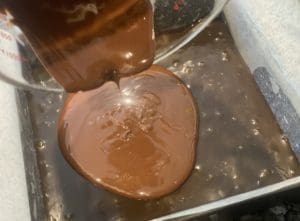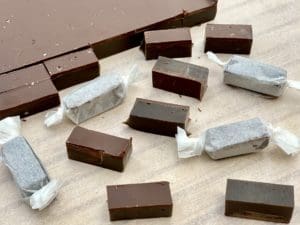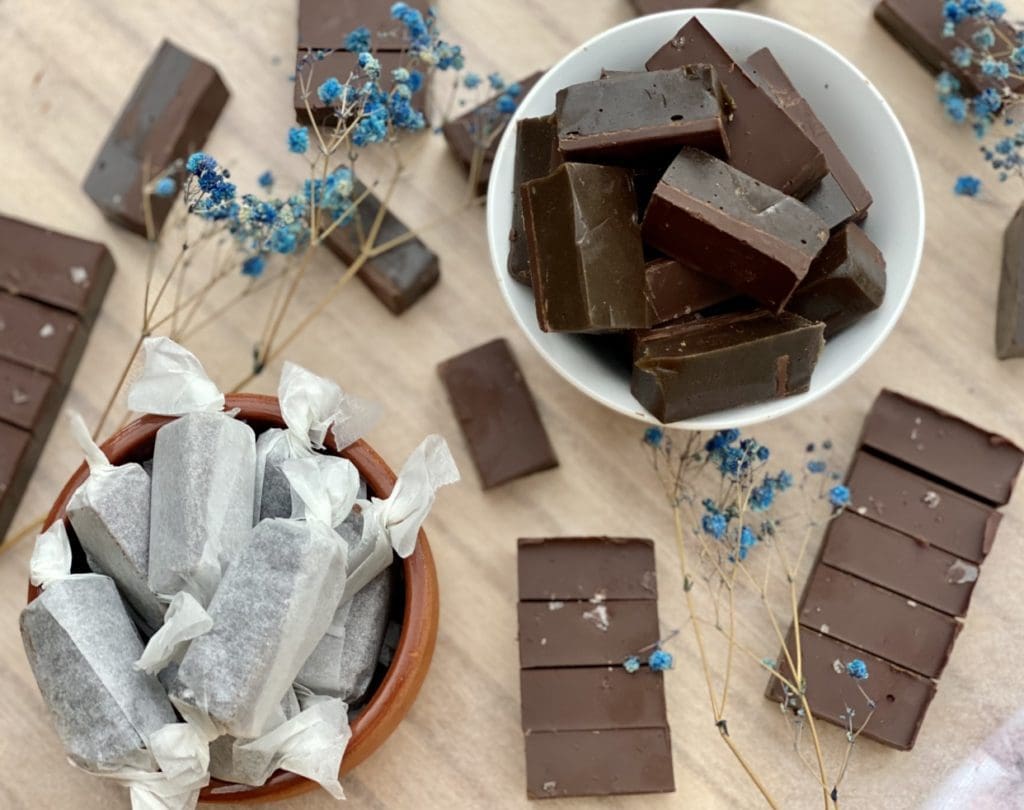
These Salted Liquorice chocolate caramels are truly divine. Chewy liquorice with a layer of indulgent, creamy dark chocolate.
Salted Liquorice Chocolate Caramel Chews
Guys, my perseverance has resulted in this amazing salted liquorice chocolate recipe! Seriously, after 3 exhausting and disappointing trials and errors, I was on the verge of throwing in the towel. I’m naturally an impatient person, so if things don’t work out after 3 attempts, it’s all over!
The reason I pushed for a 4th attempt was every batch that failed still tasted so good! The only problems were they didn’t set, or the texture was grainy or didn’t have the right consistency. Luckily, my last and final attempt ended up with a happy dance. The liquorice had the perfect texture and chewiness!
After eating like 10 pieces in one sitting, I decided they were so incredible that I had to wrap them all up to give them away to my loved ones. They shouldn’t miss out on how good these chewy candies are, and I don’t care if they dislike or even hate liquorice because I’m certain they would still fall in love with these Salted Liquorice chocolate caramels.
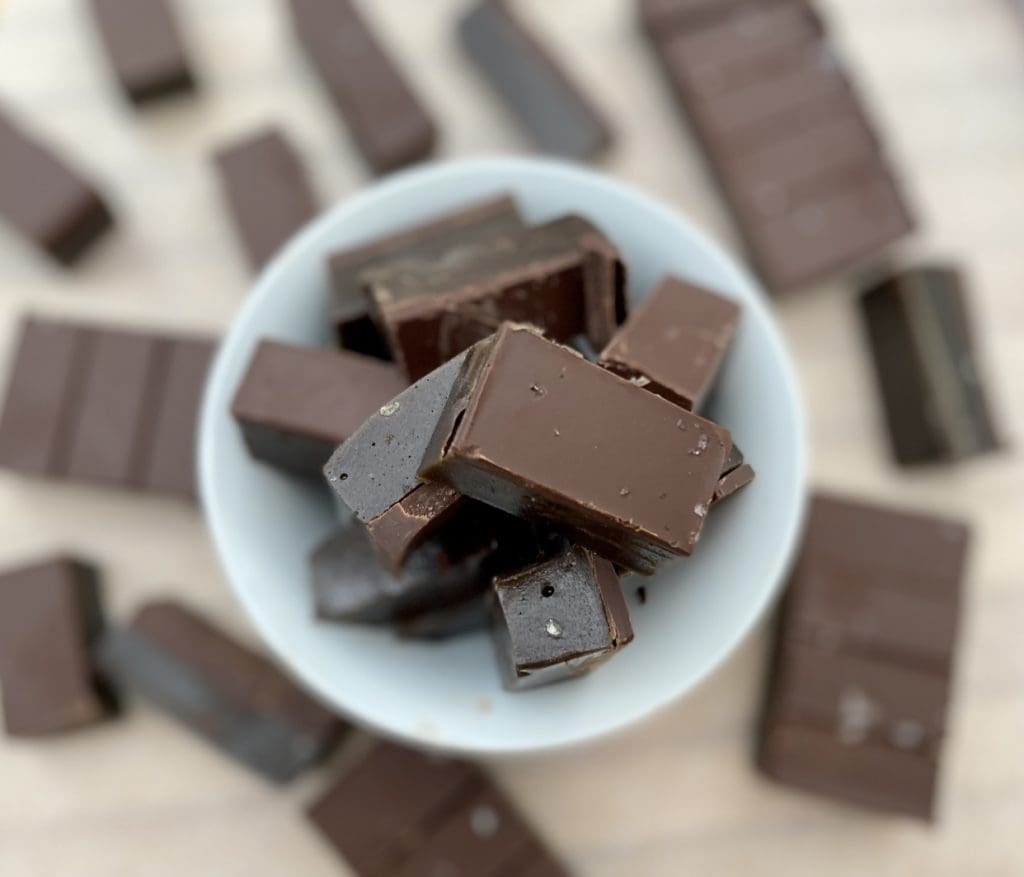
Unlike most candies, these Salted Liquorice Chocolate Caramel Chews are simple to make! We pretty much just throw everything into a saucepan and wait for it to come to temperature. There’s no need to worry about sugar crystallising and ruining the whole sugar mixture!
The caramels are creamy, buttery and chewy with a yummy hit of aniseed. The layer of delicious dark chocolate on top made it a little more indulgent.
After wrapping these candies individually in ordinary baking/parchment paper, they looked so rustic and pretty. They honestly taste so divine that people will have a hard time believing these Salted Liquorice Chocolate Chews are homemade!
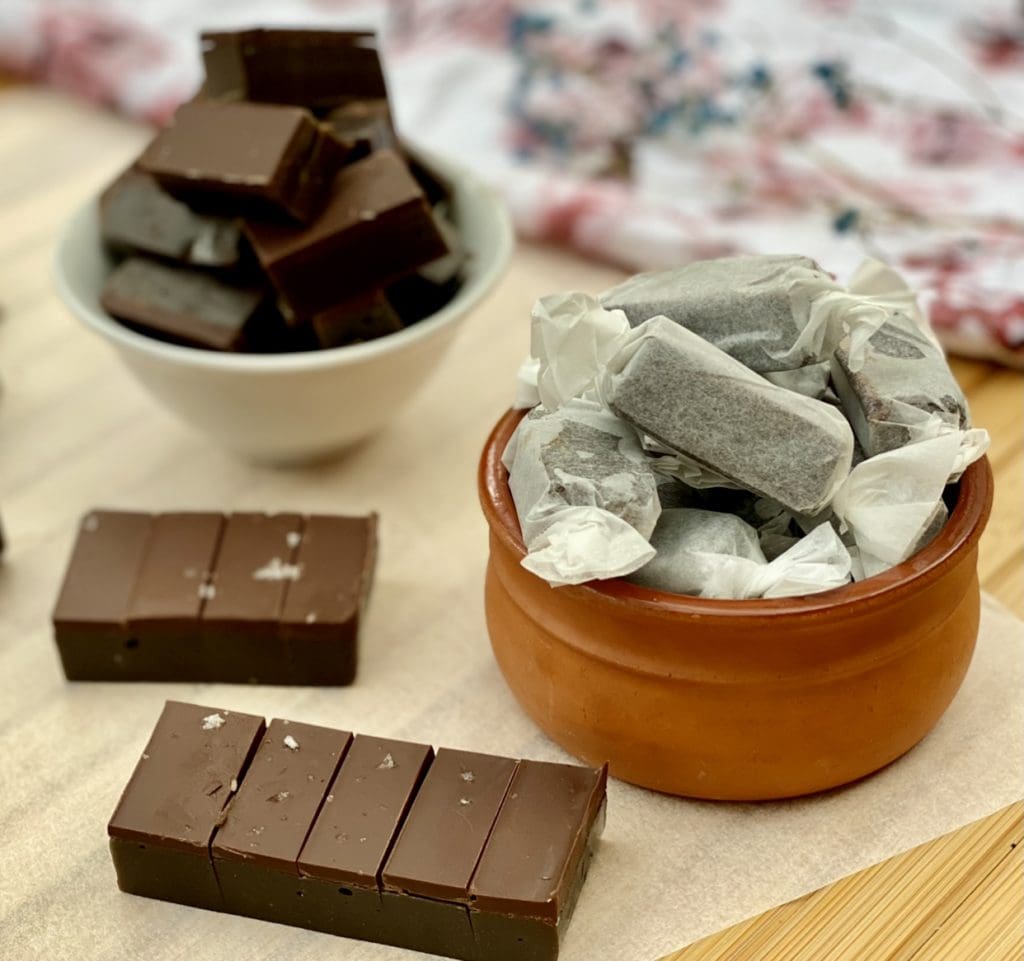
For the love of liquorice and black cats!
Do you remember those large, cheap retro bags of mixed glucose lollies? They still sell them but in smaller bags, but they don’t make them like they used to. These mixed lollies had bananas, milk bottles, pineapple, strawberries and creams, jelly beans and ….. BLACK CATS.
No one ate the black cats, but not because they were bad luck. It was because black cats were liquorice lollies.
When my sister and I were little, dad made us go to Sunday school. Our church group would pick us up and drop us off in their minibus. At drop off, we could pick two lollies from a container before we got off the bus. By the way, that was my favourite part of Sunday school.
The children would go on about how much they hated the black cats and how disgusting they tasted. It was uncool to pick them, as they were considered gross, so I gave into peer pressure and never choose black cats. However, deep down inside, I wanted ALL the black cats.
For me, liquorice was always something that tasted unique but delicious. I still remember happily skipping and grasping on to thin stringy liquorice as a kid. They were almost as long as I was, and I loved playing with and eating them at the same time.
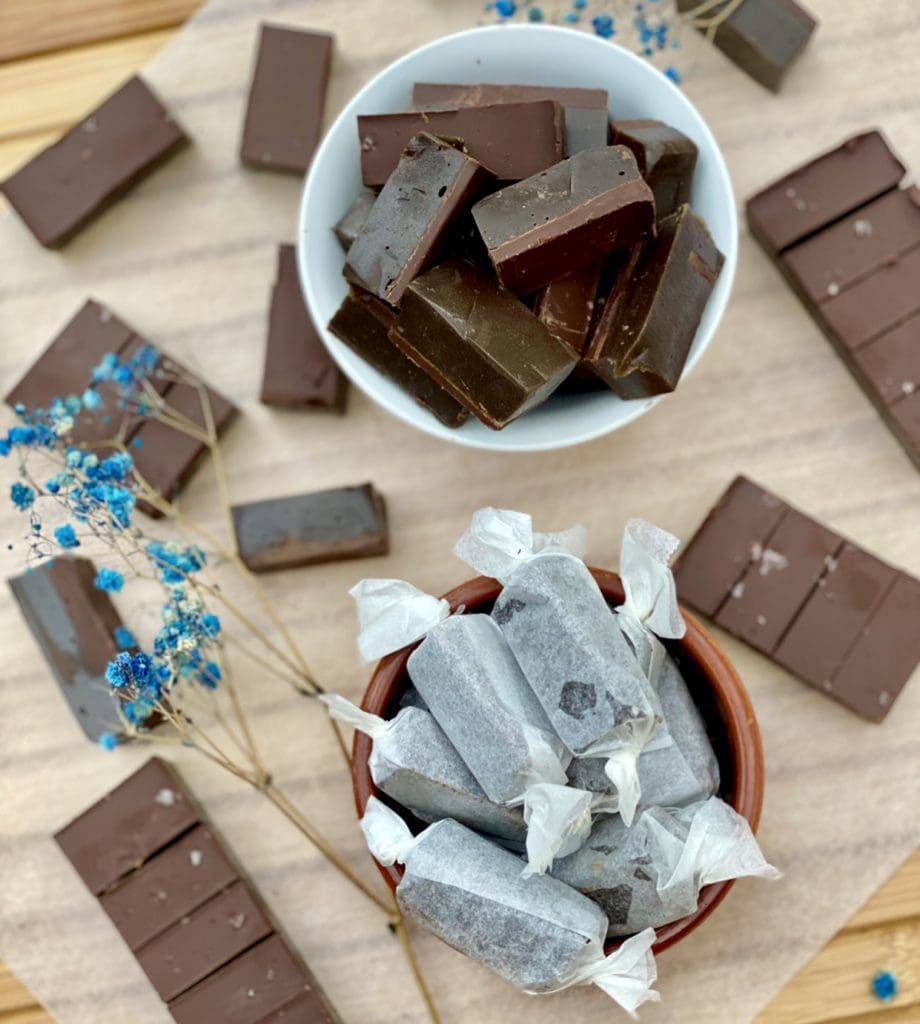
What is the secret ingredient?
The first three batches I made did not set, but the flavours were there. One came out like thick sludge, one was grainy and the last one didn’t have the right chewiness. Yes, I wasted lots of ingredients and money on creating this candy!
After trying and tweaking a few recipes, I discovered the magic ingredient. Believe it or not, it’s flour! Sounds unusual, right? Well, it did to me!
As soon as the sugar mixture comes to temperature, we remove it from the heat and quickly stir in the flour. The extreme heat from the sugar mixture cooks the flour instantly.
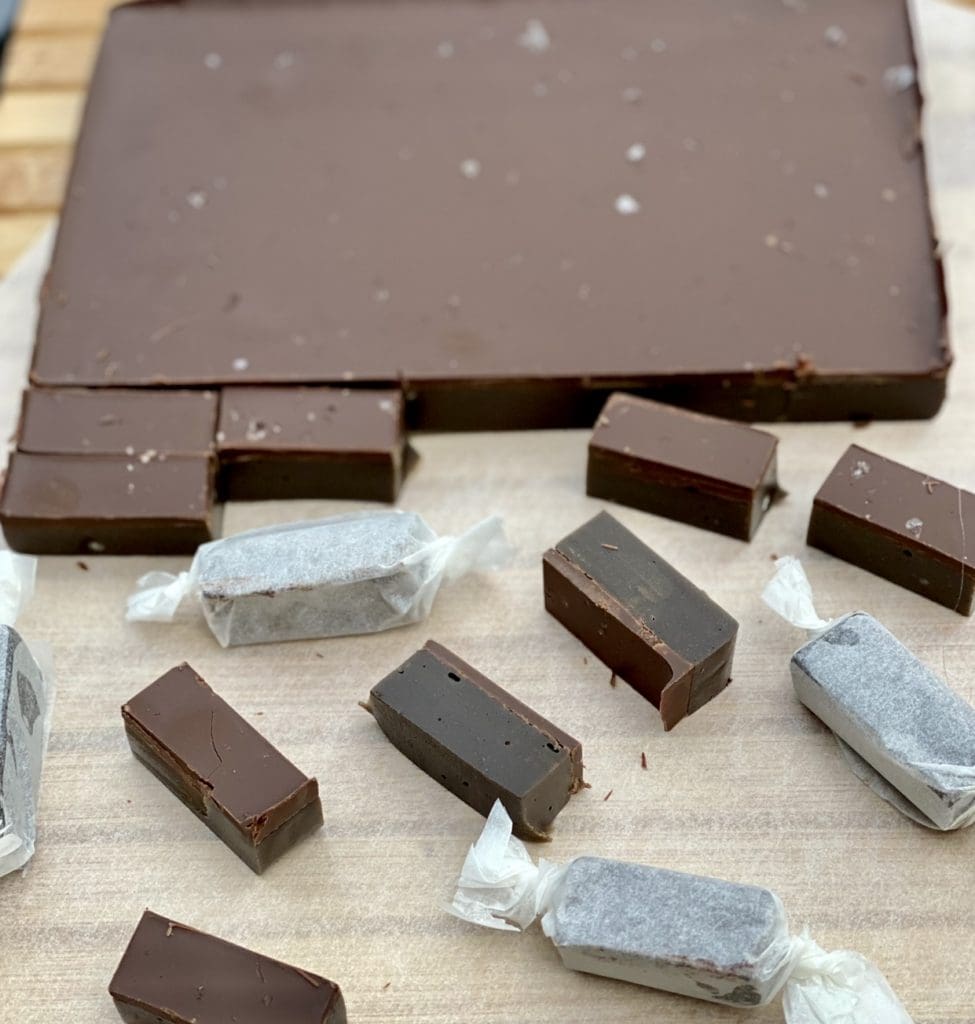
The flour works as a binder and also gives the liquorice the right amount of chewiness. I only used flour in my 4th batch, so I was happy that the liquorice set nicely. However, I was worried about the texture. Will the flour make the liquorice grainy and will I taste raw flour?
Thank goodness the answer is no! The liquorice isn’t grainy, but it wasn’t smooth. It has a pleasant texture we all enjoyed, and there’s no taste of raw flour. My family and friends loved these liquorice candies, they make the perfect edible gift!
Do you have cravings for sweets? Great, you’ll love these recipes:
Chocolate Guinness Cake with Cream Cheese
Dutch Baby Pancake with Berries, Chocolate and Cream
Ingredients for Chocolate Liquorice
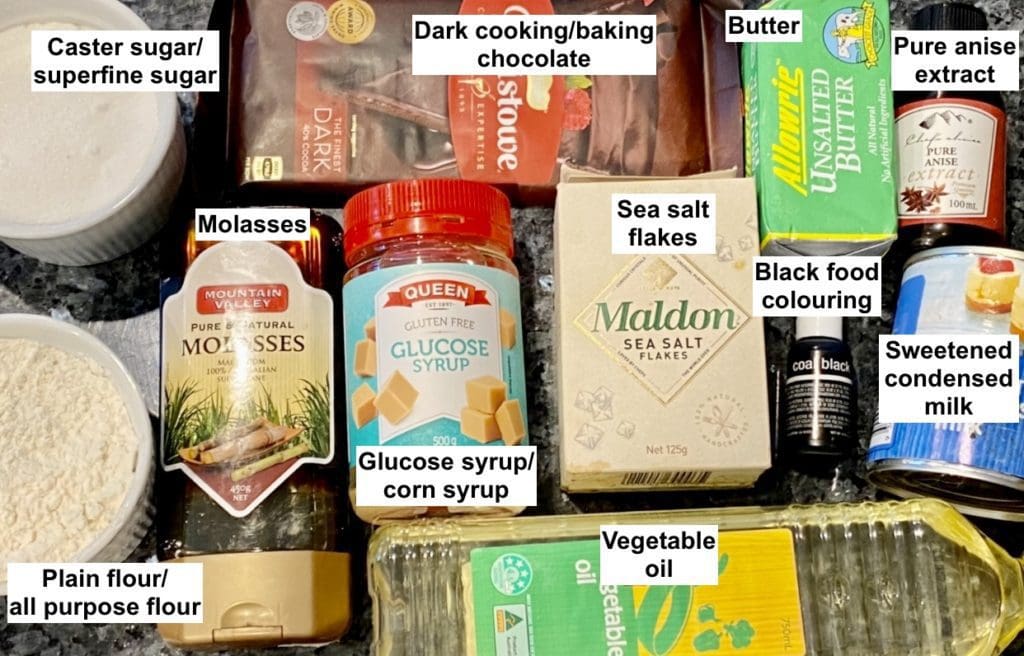
Anise extract – Liquorice extract is difficult to get here, so I used pure anise extract. In testing this recipe, I went through 3 bottles of different brands of anise extract. In doing this, I realised some extracts were stronger in aniseed flavour than others. However, even the strongest bottle still produced a subtle liquorice flavour. I put 2 tablespoons of anise extract in my sugar mixture, and I know this sounds heaps, but it really isn’t. To be honest, I wanted to put another tablespoon but my taste testers told me that this batch was perfect. Adjust the amount of extract according to your taste 1 tbsp for mild and 3 for a decent dose of liquorice flavour.
Caster sugar (superfine sugar) – Caster sugar has finer granules than regular white sugar, but it’s not the same as icing/powdered sugar. Many baking or candy recipes call for caster sugar as it dissolves faster and better into mixtures. If you can’t find caster sugar, you can make your own by placing regular sugar in a food processor or blender. Pulse the sugar a few times until it looks finer, but don’t over-blitz to a powder consistency. However, you could just use equal amounts of regular white sugar.

For the latest recipes, join our FREE 3CatsFoodie mailing list
Glucose syrup (or substitute for corn syrup) – Glucose is not super sweet, but it’s thick and sticky. It’s used to make different sweets such as marshmallows, toffee and caramel. Supermarkets usually stock containers of glucose syrup near the baking section.
Sweetened condensed milk – Supermarkets usually stock cans of condensed milk near the long-life milk section. It’s quite thick and sticky with a very sweet milky flavour. Skim condensed milk is also available, but I haven’t tested it out with this recipe as yet.
Molasses (or black treacle) – Molasses gives brown sugar its colour and caramel flavour. It’s a thick sweet syrup usually found near the baking section of the supermarket, or in the health section. You could also use blackstrap molasses in this recipe.
Dark chocolate – I prefer using cooking/baking chocolate as they usually have a higher percentage of cocoa butter, which makes it easier to melt and work with. However, any dark or milk (eating) chocolate would work too. If using dark chocolate, avoid using 70% cocoa because it’s very bitter.
How to make Chocolate Liquorice
Step-by-step guide with photos
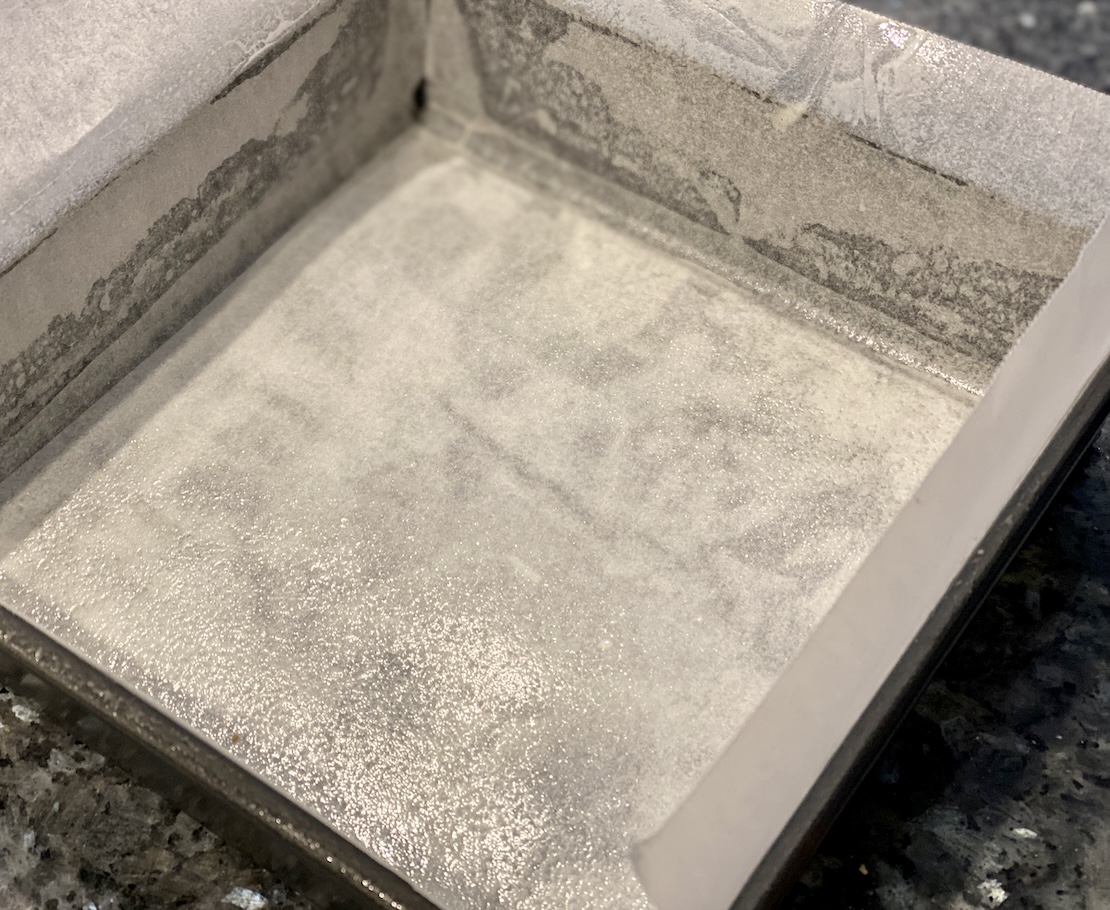
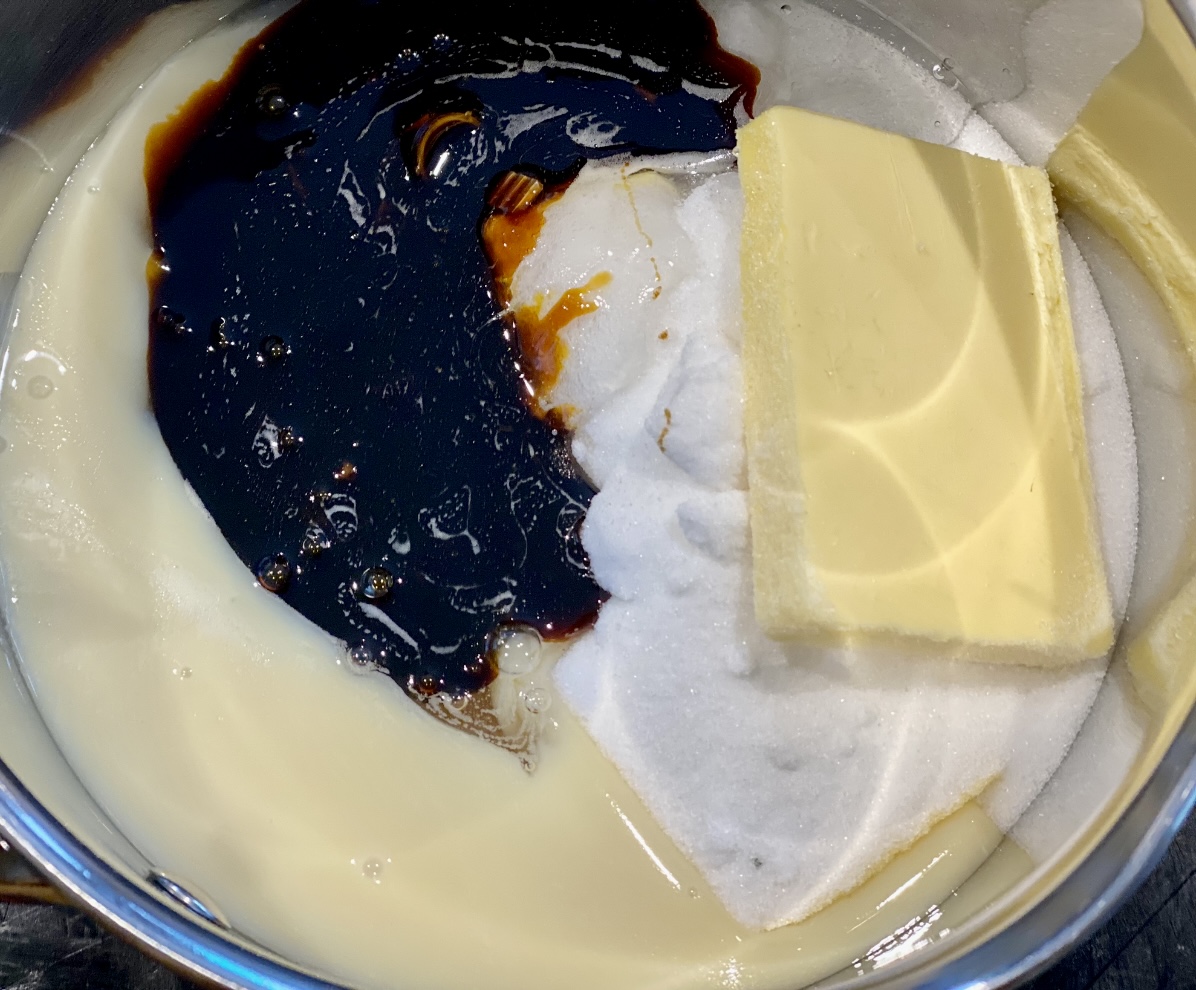
Grease and line a square 20cm (8in) baking tin with nonstick baking paper. Make sure the paper hangs over the sides of the tin as we’ll be using this to lift the liquorice out. Measure the remaining ingredients and have them ready as we have to work fast once the sugar mixture is done.
For the sugar mixture – Place butter, sugar, glucose, condensed milk, molasses and salt In a medium saucepan.
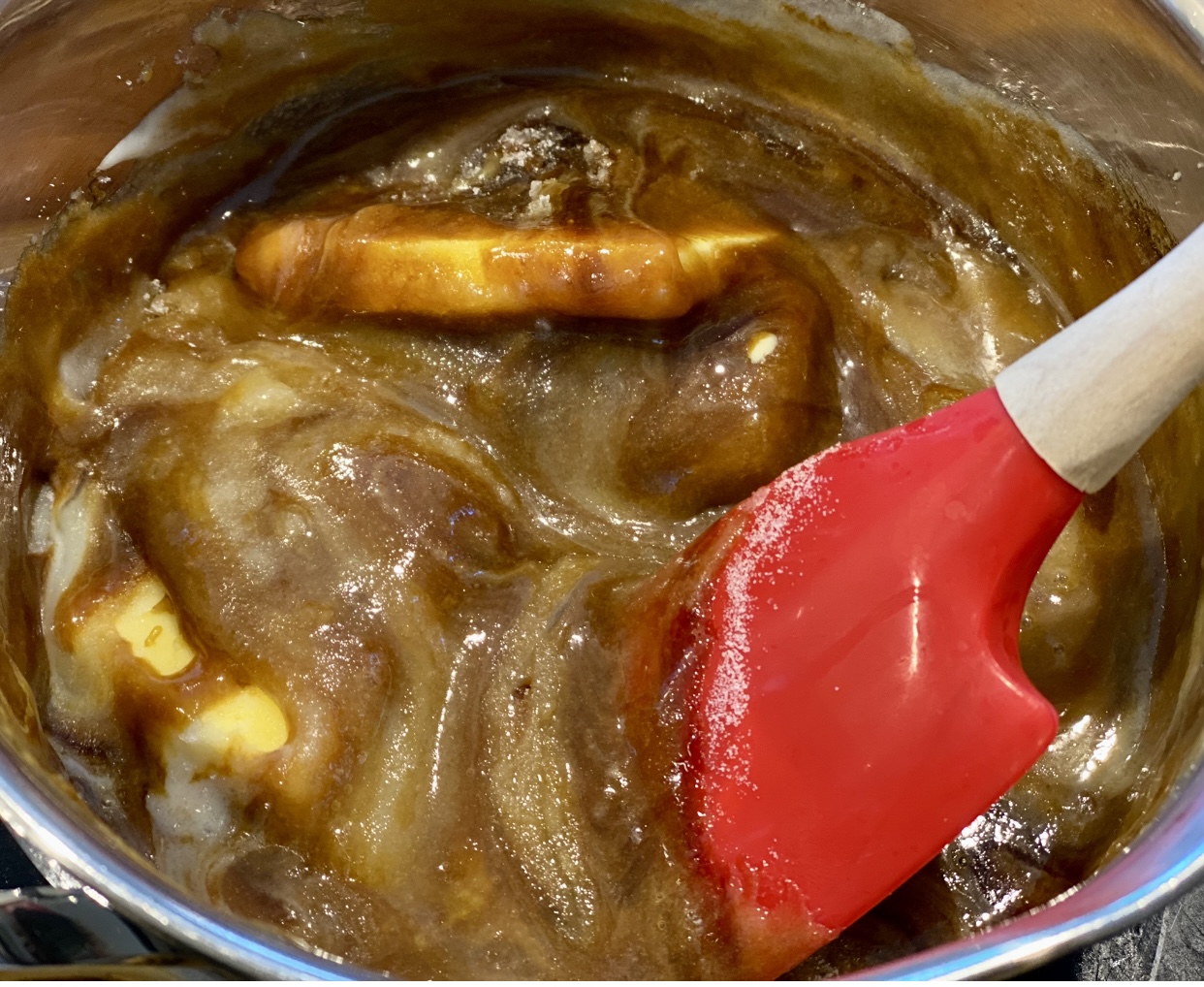
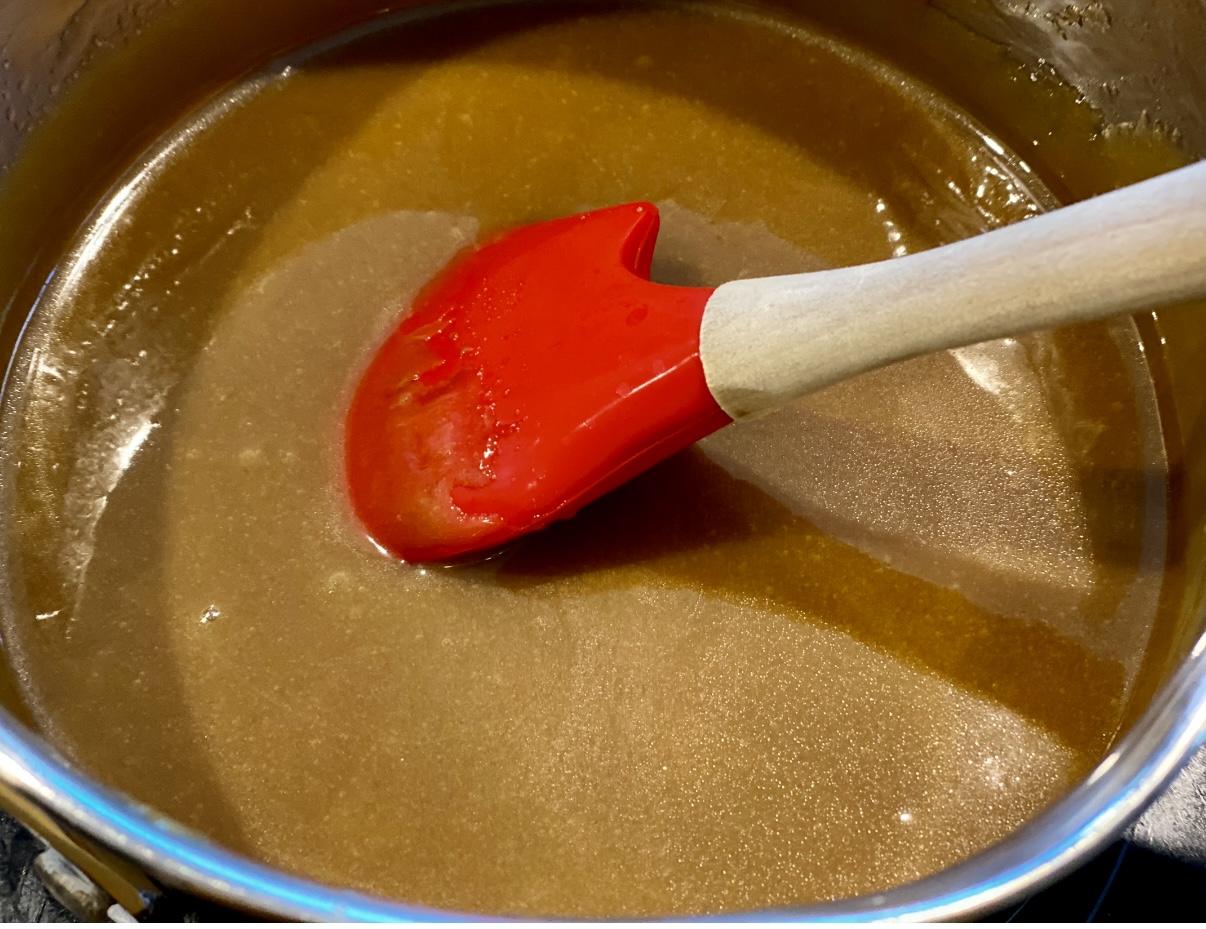
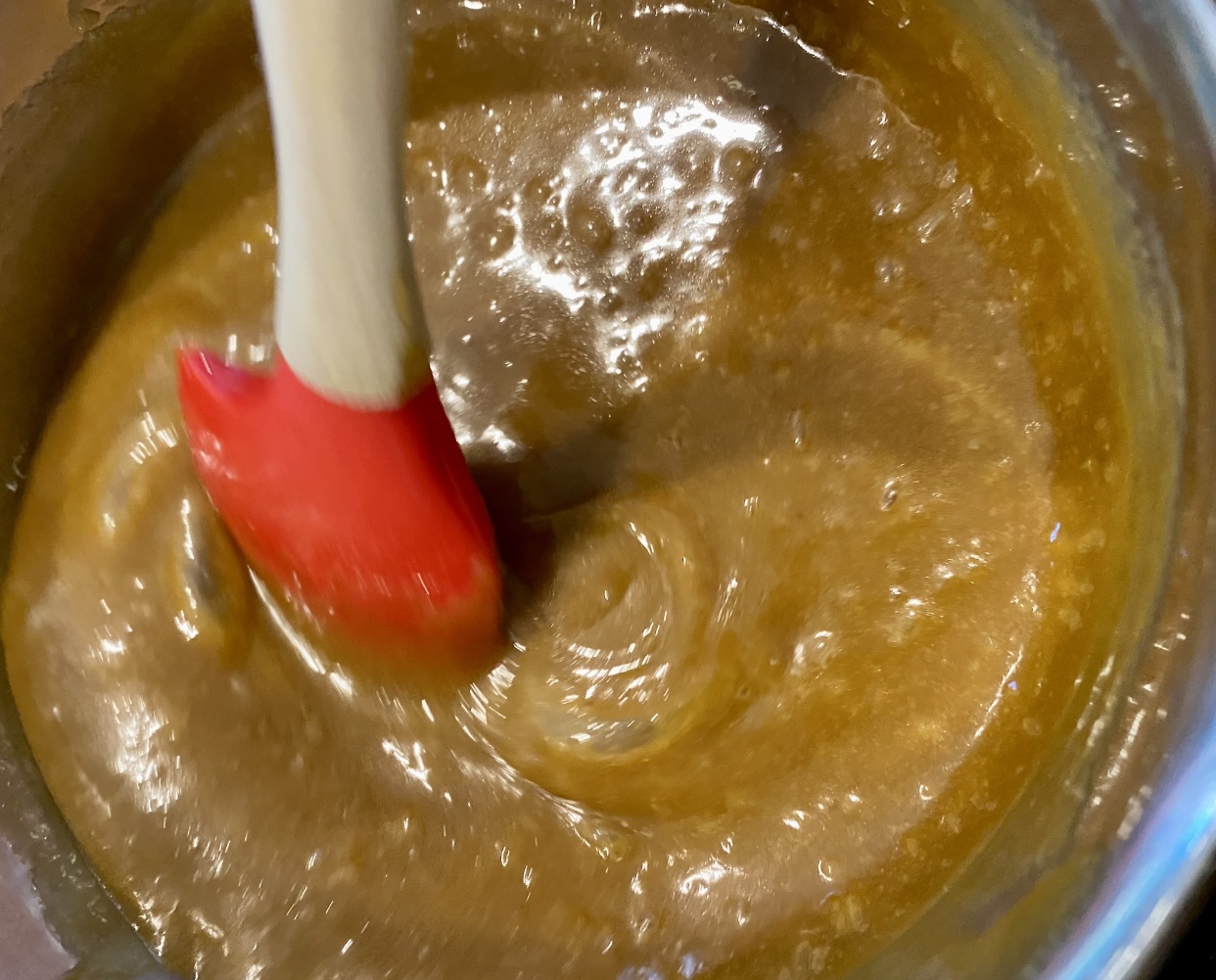
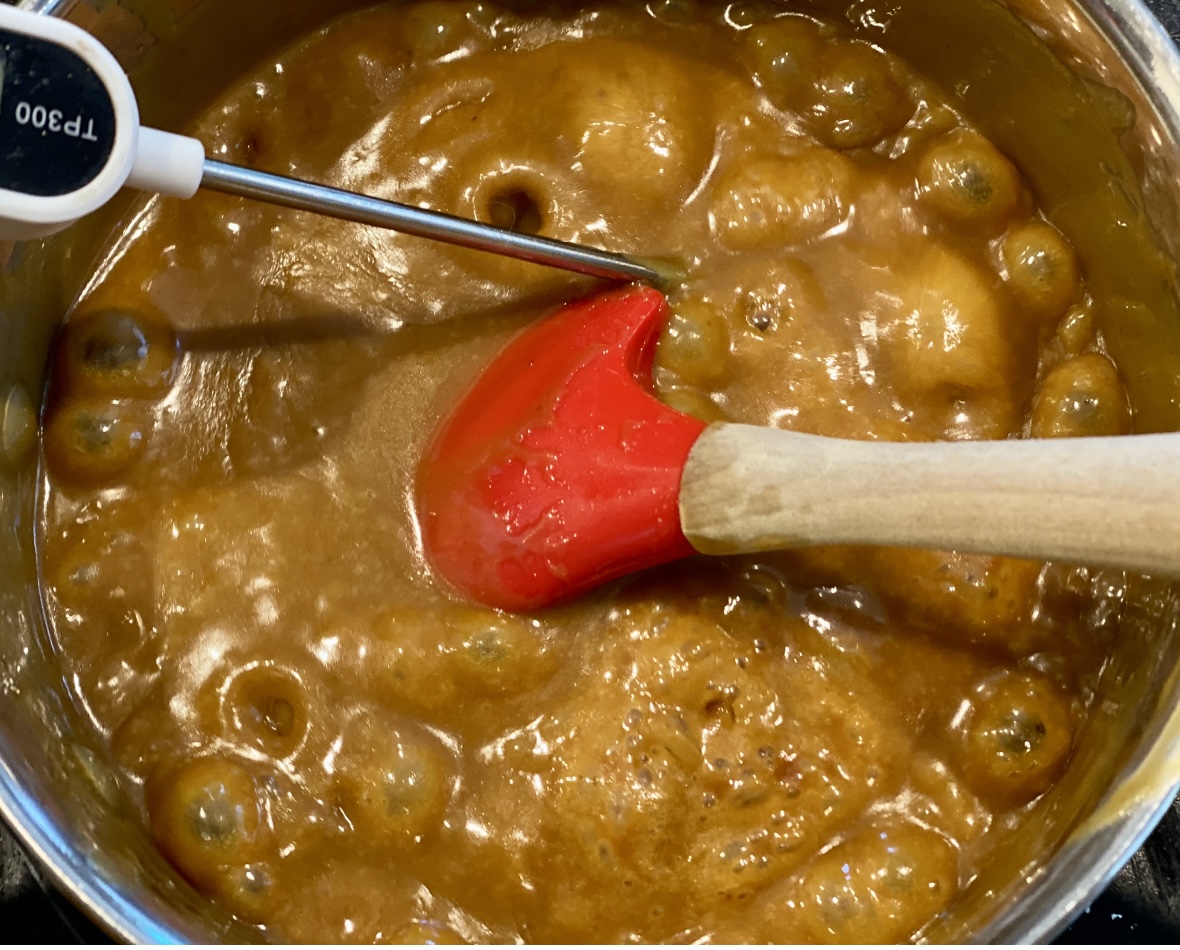
Place the saucepan over medium heat and stir continuously, scraping the bottom of the pan so it doesn’t catch. Bring the mixture to a boil and continue to stir until the mixture reaches 120°C (248°F). If you want a softer caramel chew, remove the sugar mixture from the heat at 115°C (239°F).
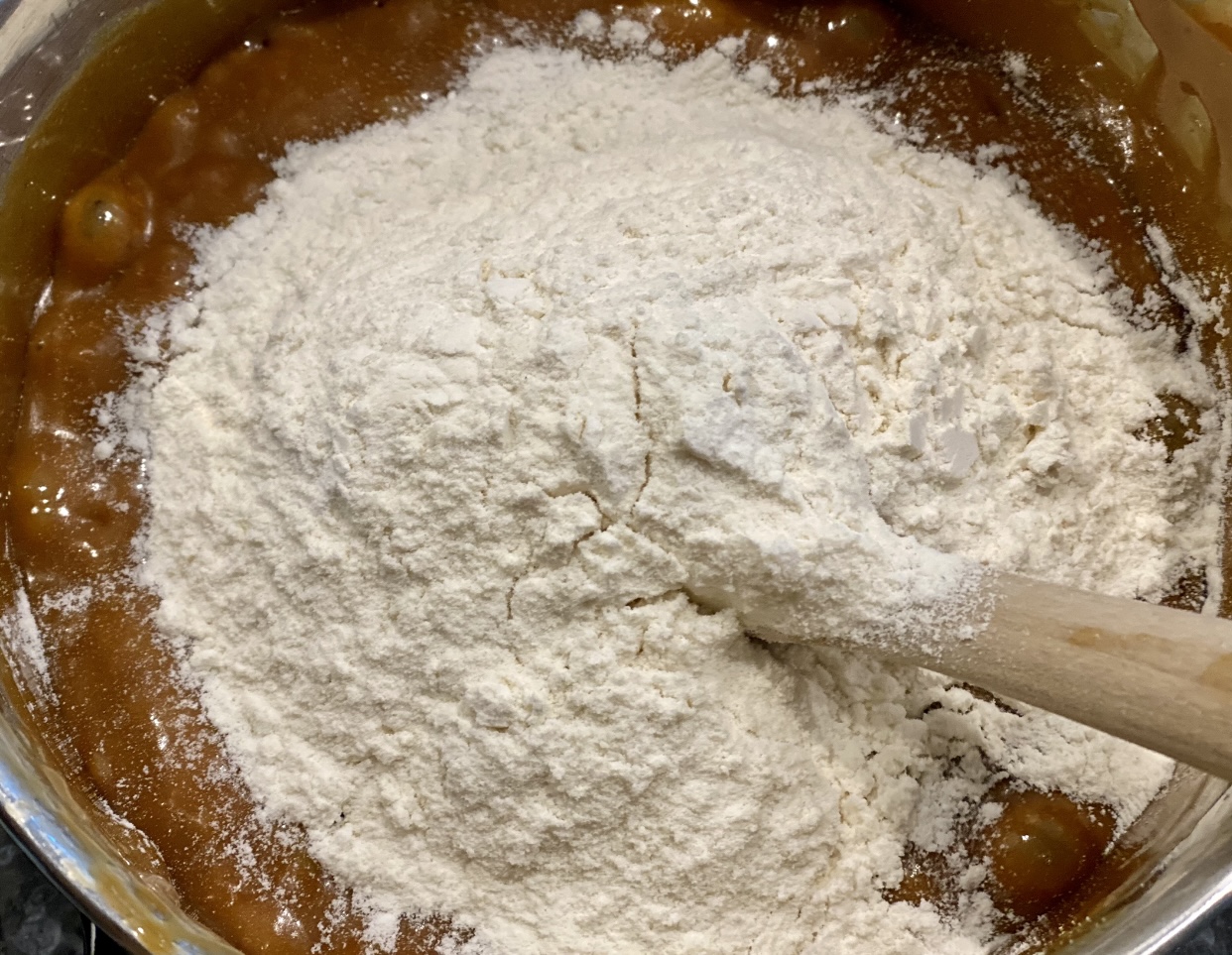
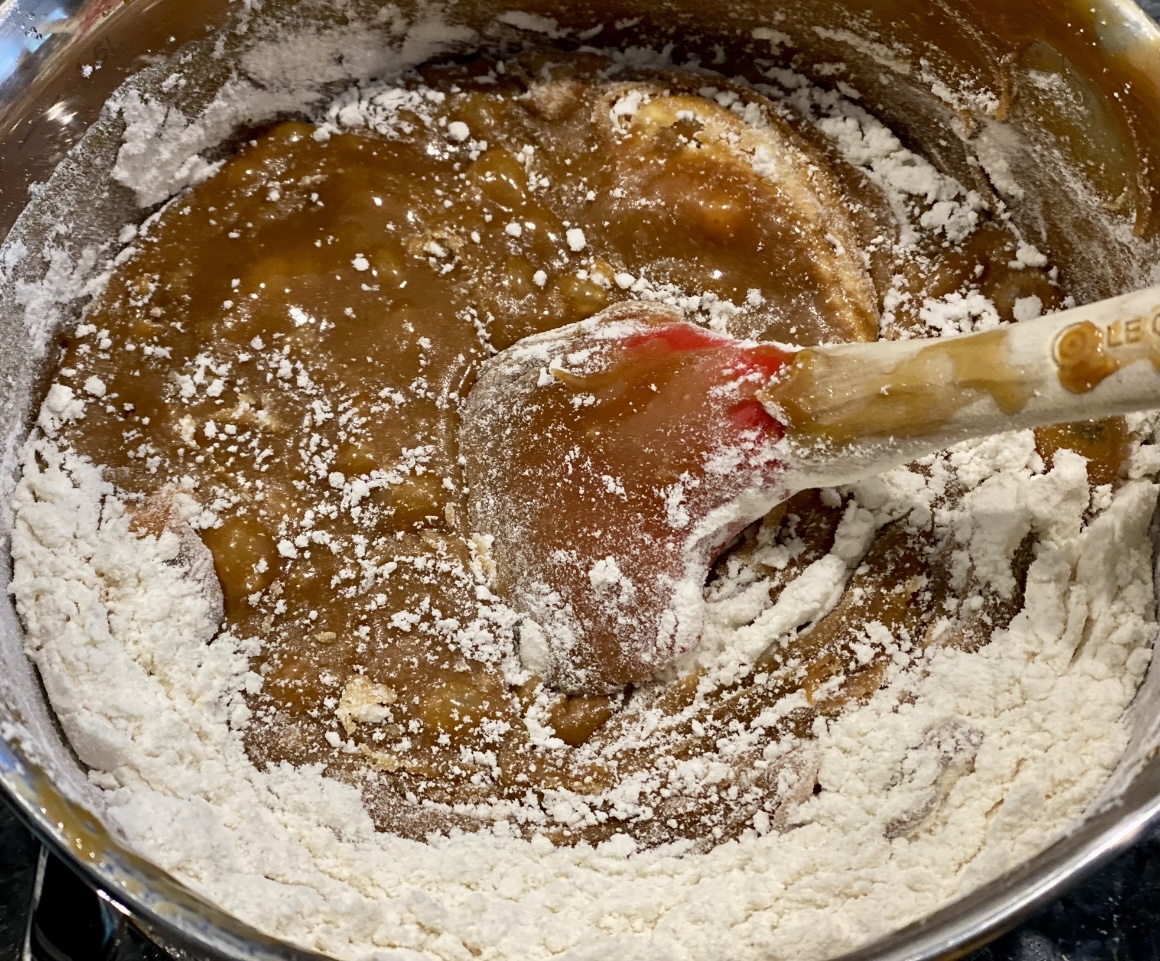
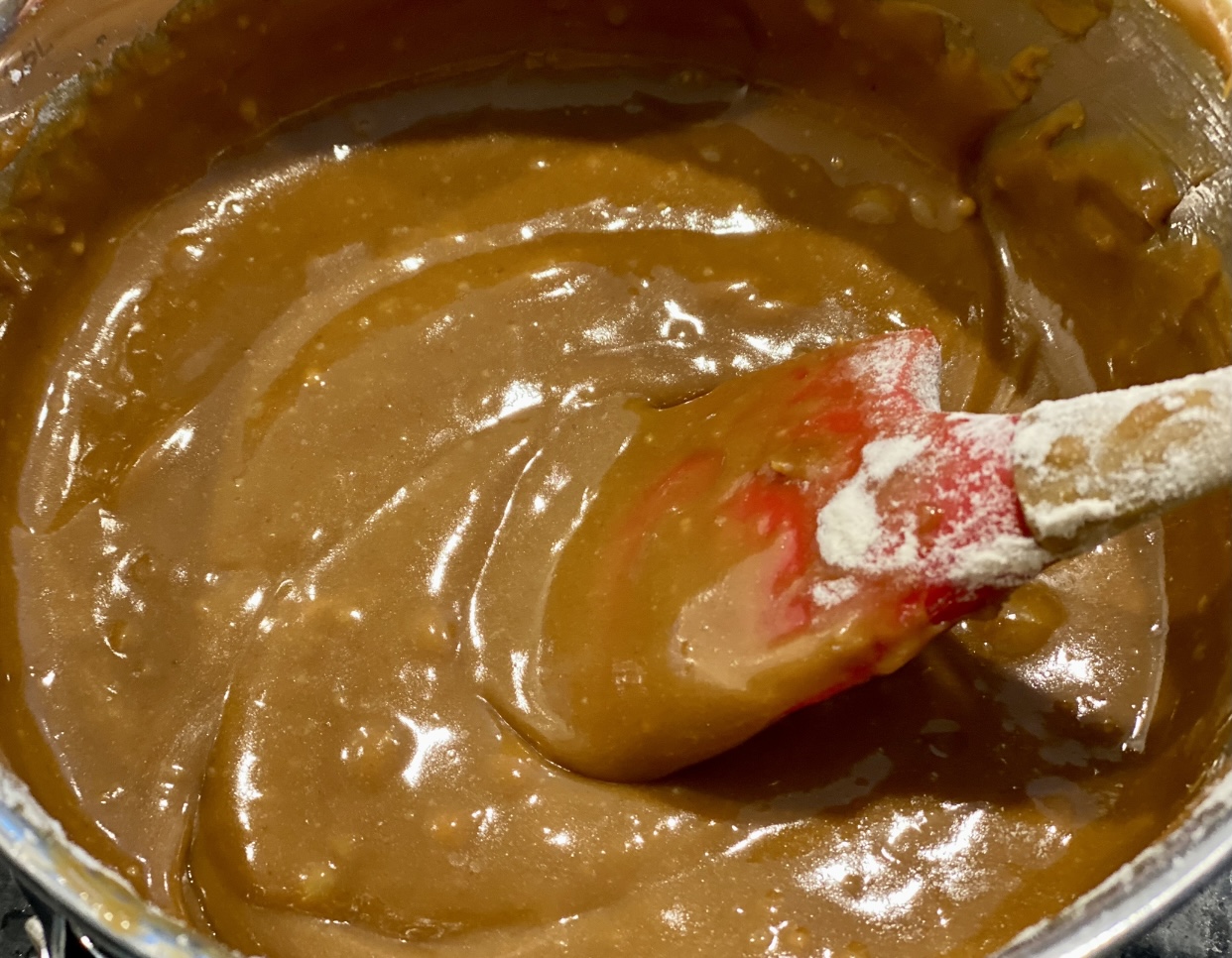
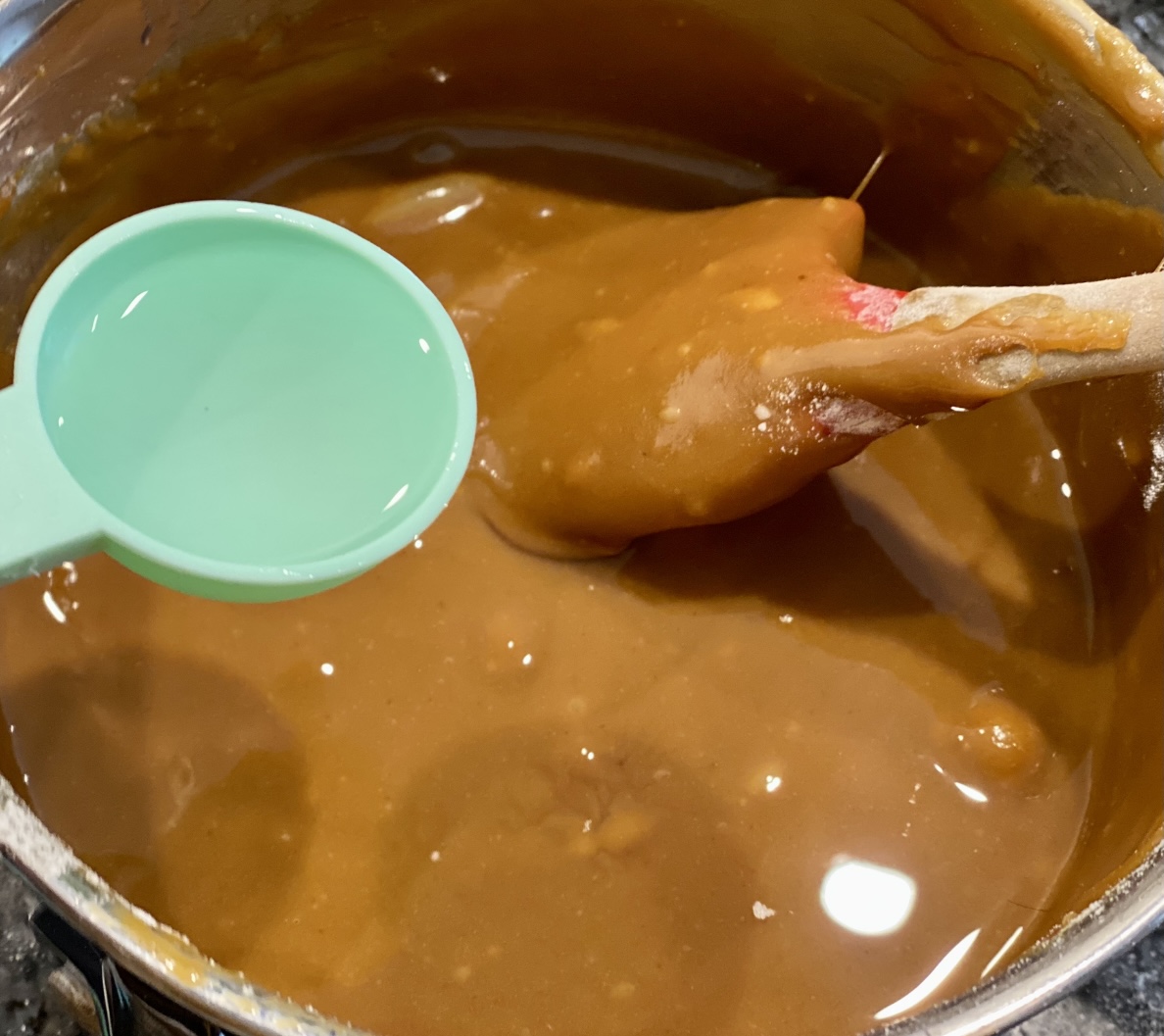
Add the flour to the sugar mixture and stir quickly until smooth, then quickly stir in the anise extract. It’ll make a loud sizzling sound, but this is normal.
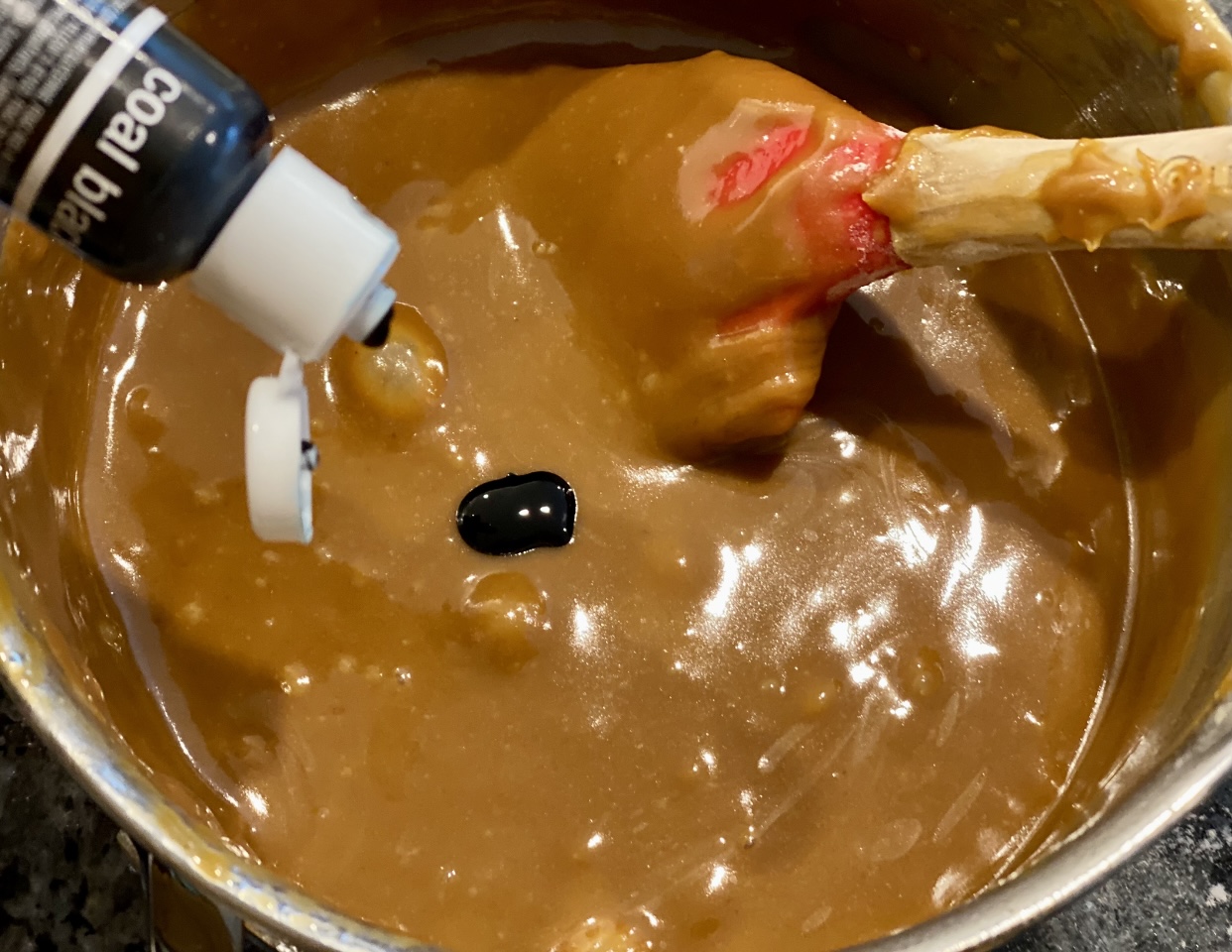
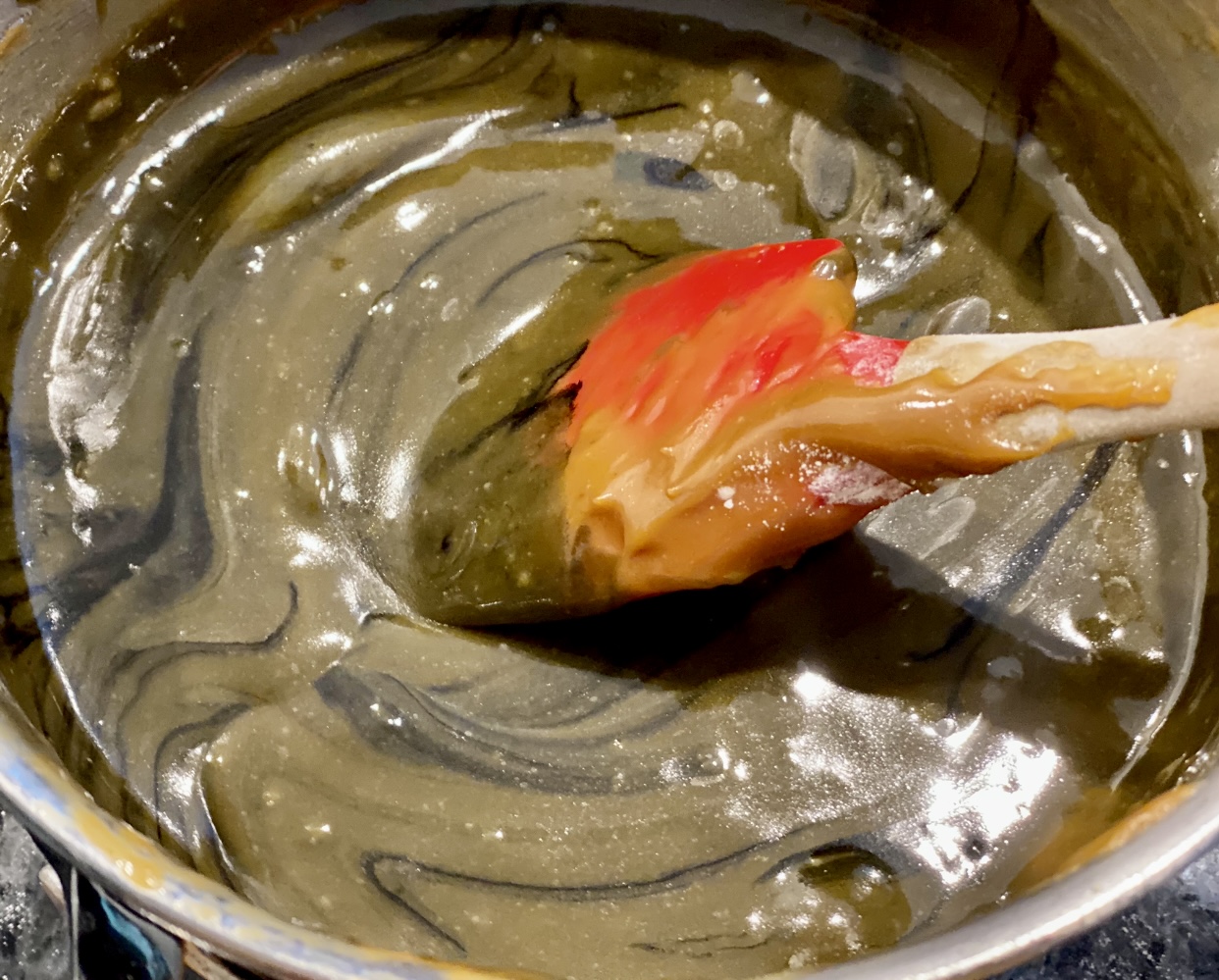
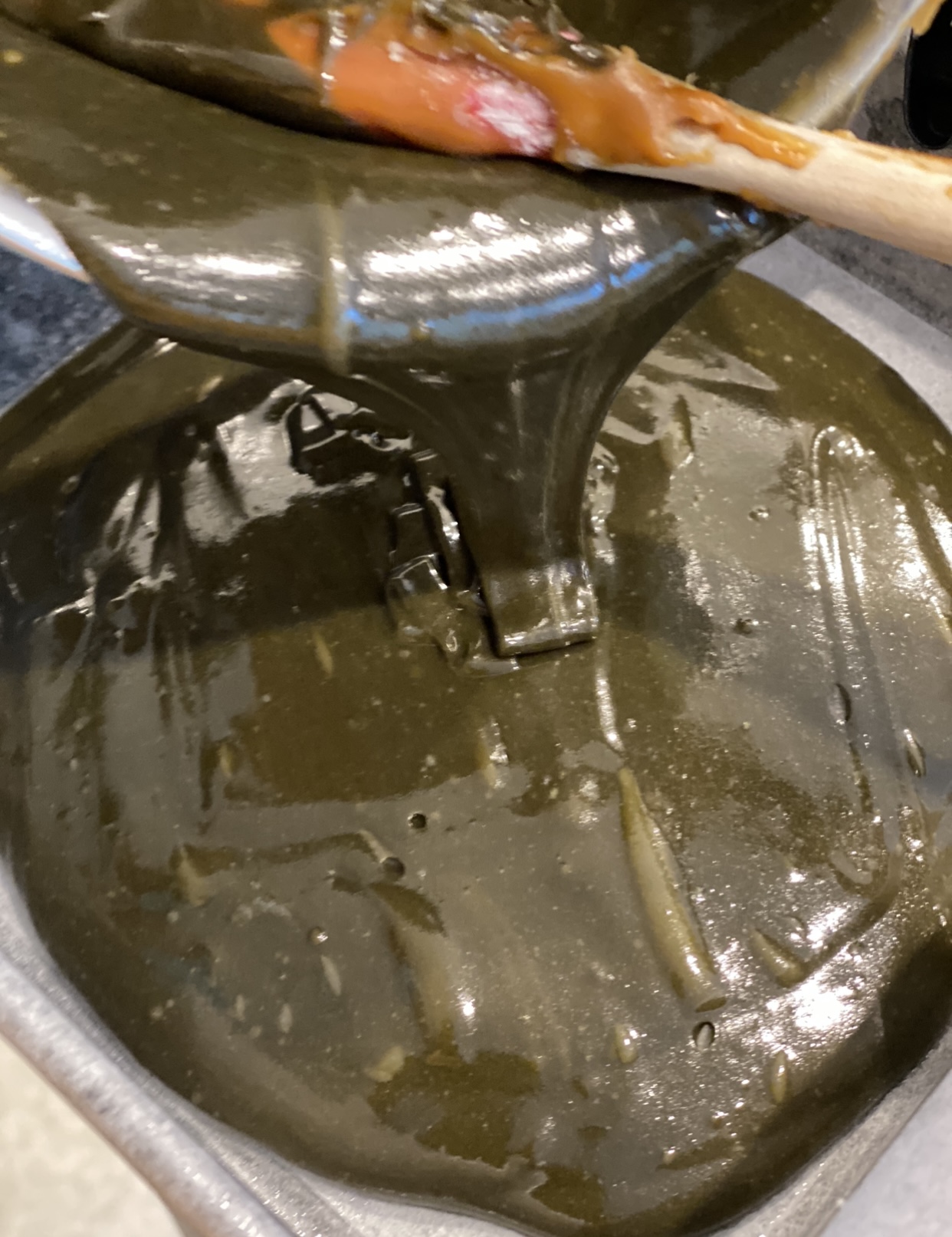
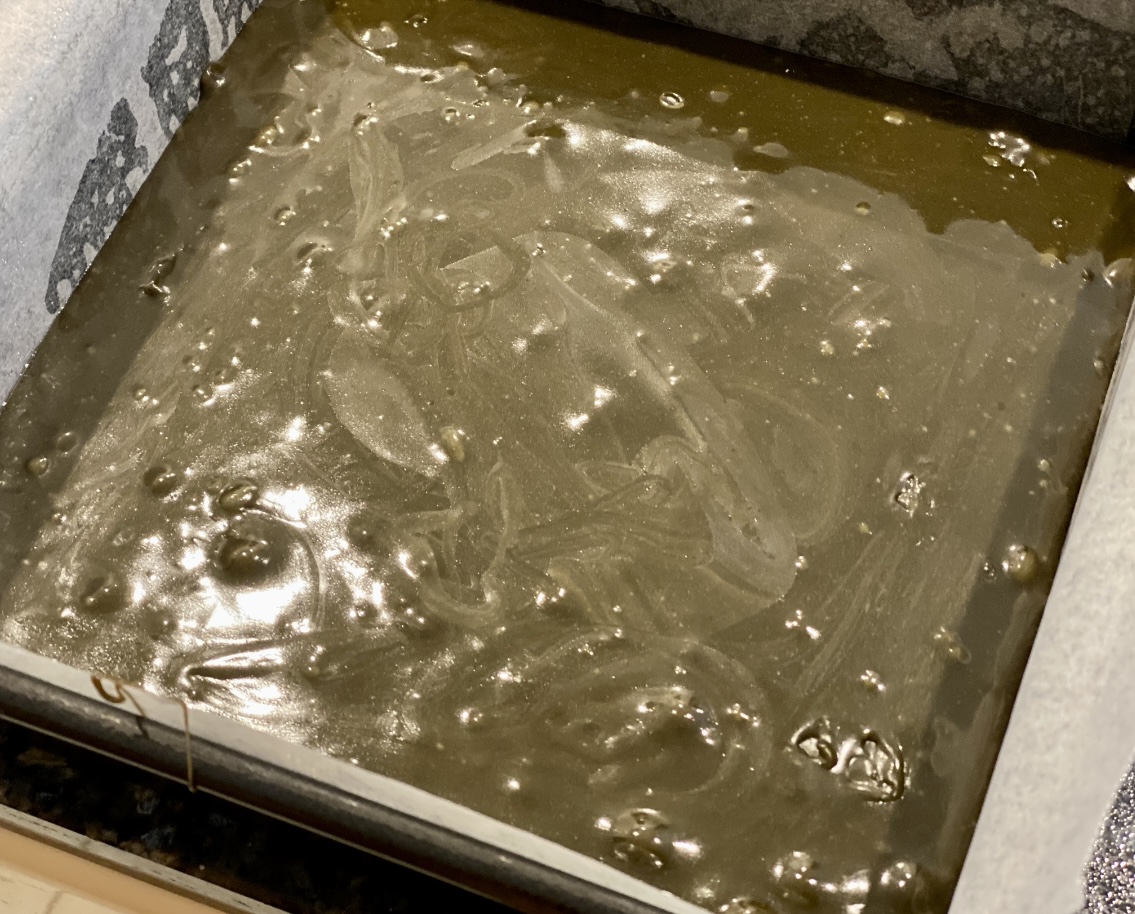
Place a few drops of black food colouring (if using) into the sugar mixture and give it a good mix. Add more drops of colouring if needed for a darker colour. Pour the mixture into the prepared tin and tilt the tin at all angles so it spreads out evenly. Tap the tin a few times against the table to remove any large bubbles. Leave the liquorice at room temperature for an hour or until it has completely cooled and set.
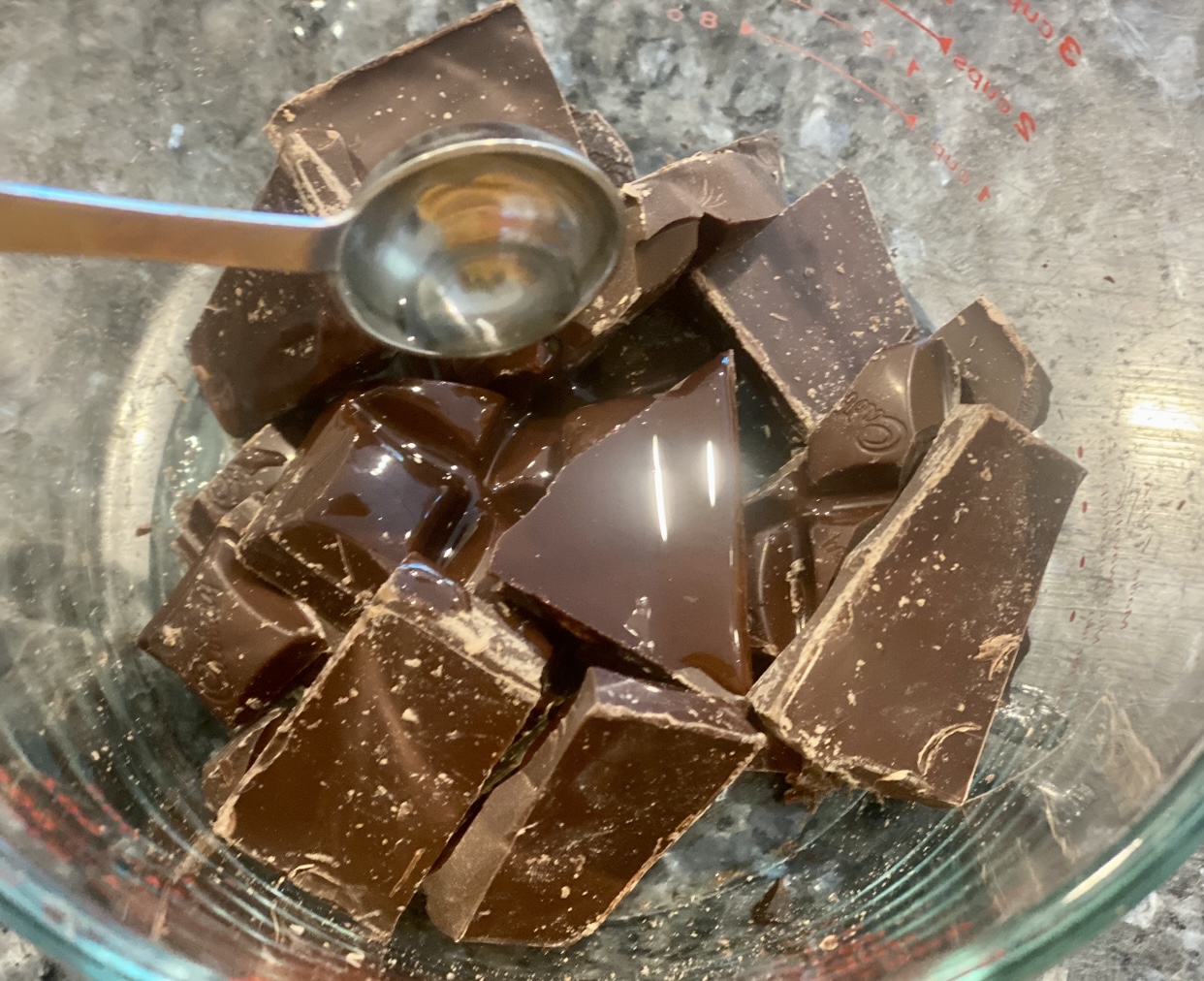
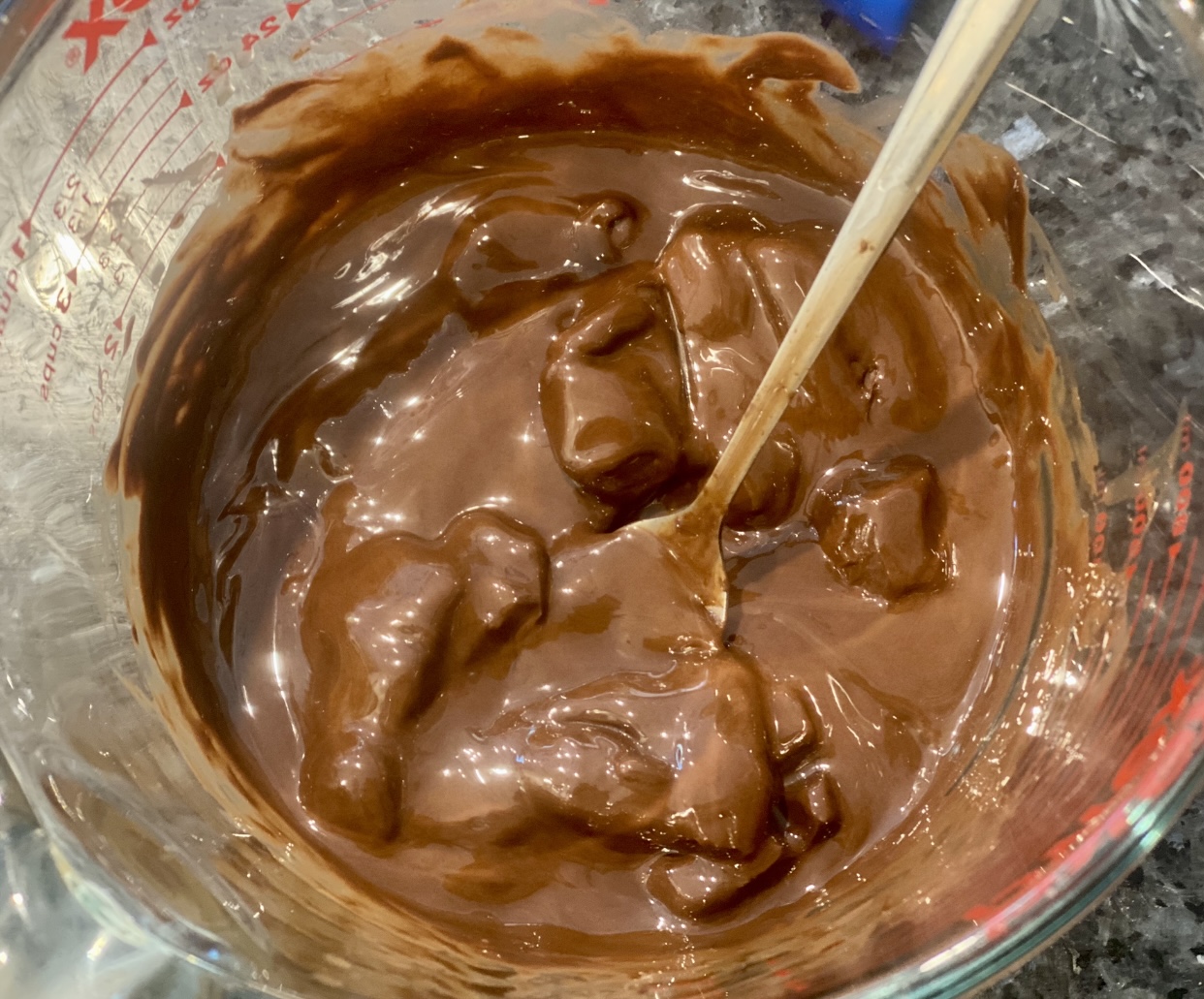
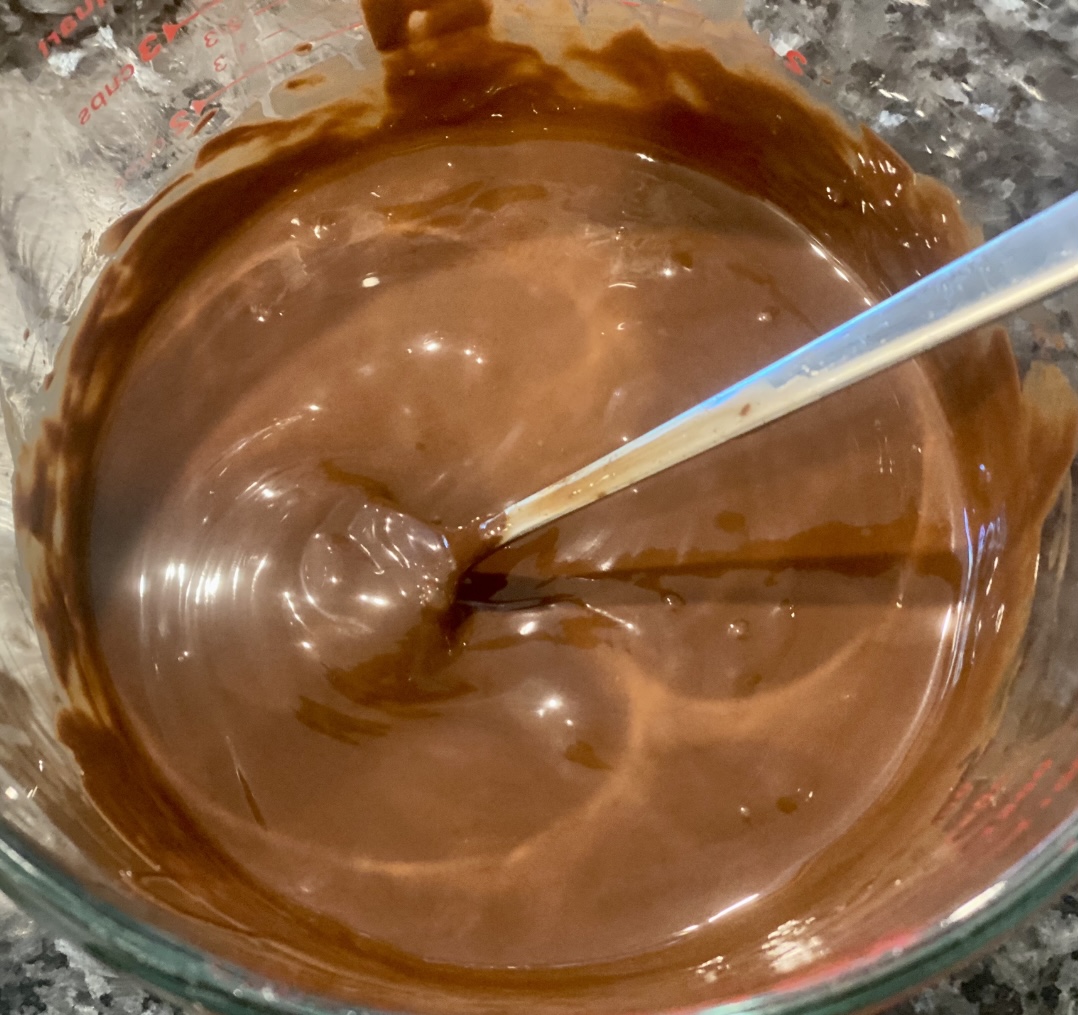
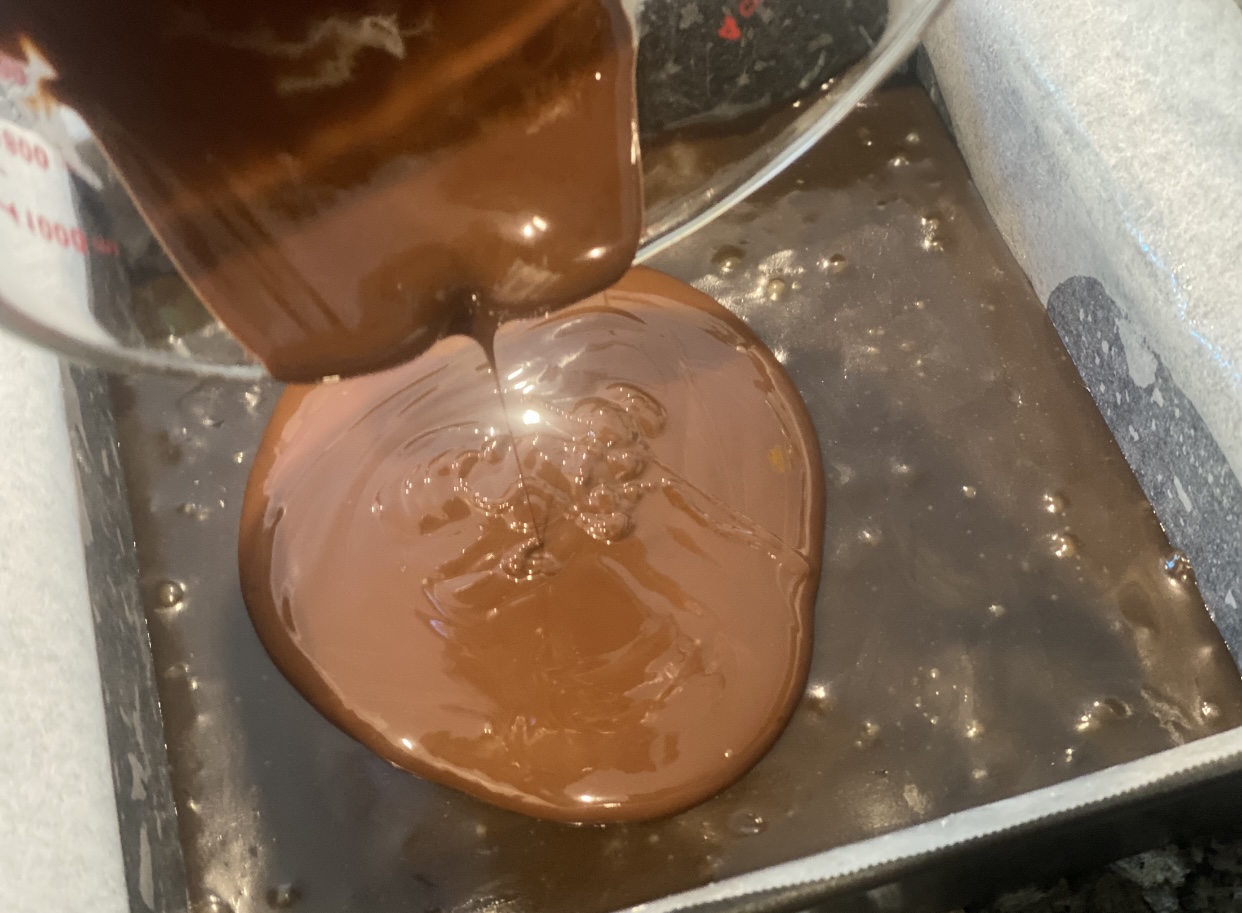
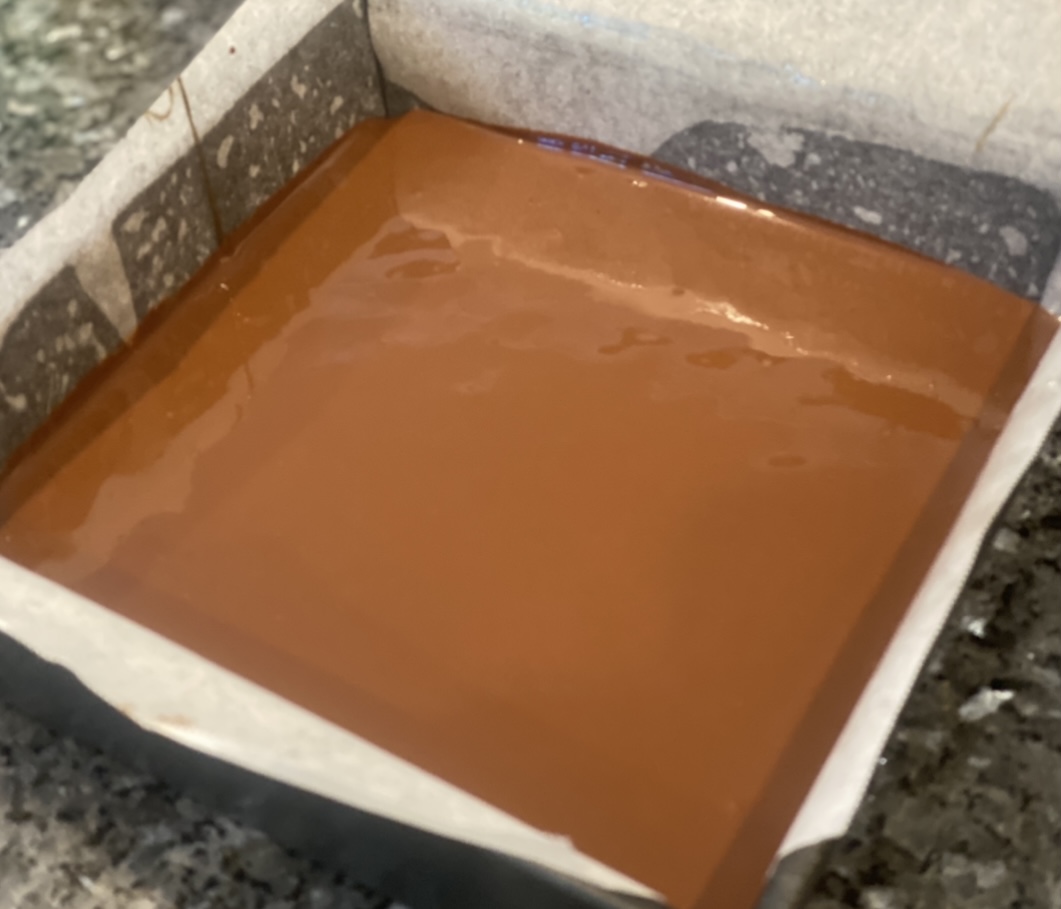
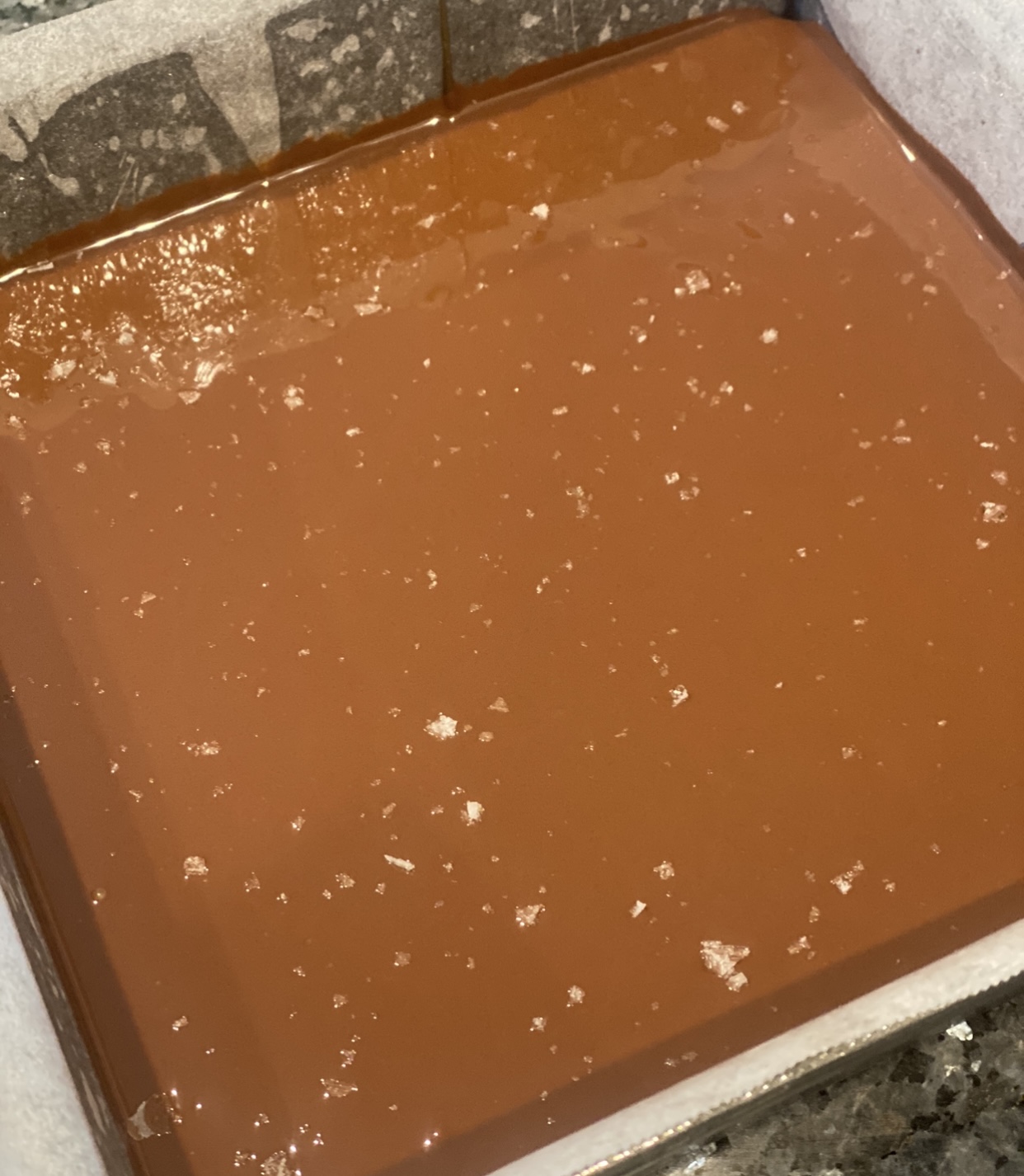
For the chocolate – Place the chocolate and oil in a microwave-safe bowl and melt it in the microwave. Do this in 40-second bursts, stirring well after each burst until the chocolate has completely melted. Pour the chocolate over the liquorice, then tilt the tin on all angles for an even coating. Lightly sprinkle sea salt flakes over the chocolate, then place in the fridge for an hour until set.
Leave the tin at room temperature for 15 minutes, then cut it into little candy pieces. To prevent them from sticking together, wrap each candy in baking/parchment paper.
Leftovers – Store the chocolate liquorice in an airtight container at room temperature for up to 2 weeks.
A Third-Party Application calculated the calories and nutritional information. Please use this as an approximate guide only.
Cooking measurements are in Australian standard spoon and cup measurements.
I would love to hear your thoughts or feedback on this post. If you have made this recipe, please show your support by commenting and rating this recipe. You can do this by scrolling down or by clicking the green circle on the left. To prevent spam on this site, an email address is required but it won’t be published.
Cheers (I’ll drink to that) – Cat Tre
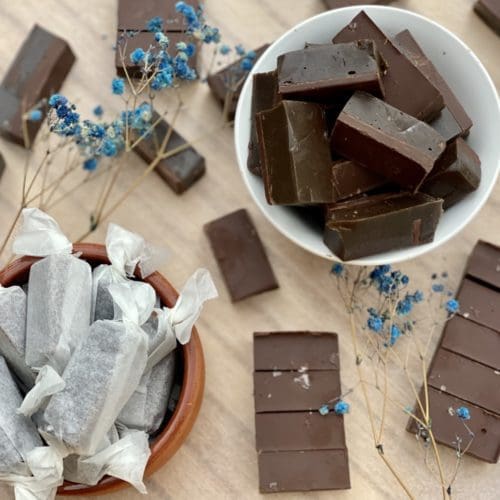
Chocolate Liquorice
Ingredients
- 113 gm unsalted butter (chopped roughly)
- 1 cup caster sugar (NOTE 1)
- ½ cup glucose syrup (or corn syrup) (NOTE 2)
- ½ cup sweetened condensed milk (NOTE 3)
- ¼ cup molasses (NOTE 4)
- ½ tsp salt
- ¾ cup plain flour (all purpose flour)
- 2 tbsp pure anise extract (more or less depending on taste) (NOTE 5)
- black food colouring gel (optional)
- 200 gm dark cooking chocolate (chopped roughly) (NOTE 6)
- 2 tsp vegetable oil (or any neutral oil)
- sea salt flakes (optional)
- oil spray for greasing
Instructions
- Grease and line a square 20cm (8in) baking tin with nonstick baking paper. Make sure the paper hangs over the sides of the tin as we'll be using this to lift the liquorice out. Measure the remaining ingredients and have them ready as we have to work fast once the sugar mixture is done.

- For the sugar mixture – Place butter, sugar, glucose, condensed milk, molasses and salt In a medium saucepan.

- Place the saucepan over medium heat and stir continuously, scraping the bottom of the pan so it doesn't catch. Bring the mixture to a boil and continue to stir until the mixture reaches 120°C (248°F). If you want a softer caramel chew, remove the sugar mixture from the heat at 115°C (239°F).

- Add the flour to the sugar mixture and stir quickly until smooth, then quickly stir in the anise extract. It'll make a loud sizzling sound, but this is normal.

- Place a few drops of black food colouring (if using) into the sugar mixture and give it a good mix. Add more drops of colouring if needed for a darker colour. Pour the mixture into the prepared tin and tilt the tin at all angles so it spreads out evenly. Tap the tin a few times against the table to remove any large bubbles. Leave the liquorice at room temperature for an hour or until it has completely cooled and set.

- For the chocolate – Place the chocolate and oil in a microwave-safe bowl and melt it in the microwave. Do this in 40-second bursts, stirring well after each burst until the chocolate has completely melted. Pour the chocolate over the liquorice, then tilt the tin on all angles for an even coating. Lightly sprinkle sea salt flakes over the chocolate, then place in the fridge for an hour until set.

- Leave the tin at room temperature for 15 minutes, then cut it into little candy pieces. To prevent them from sticking together, wrap each candy in baking/parchment paper.


